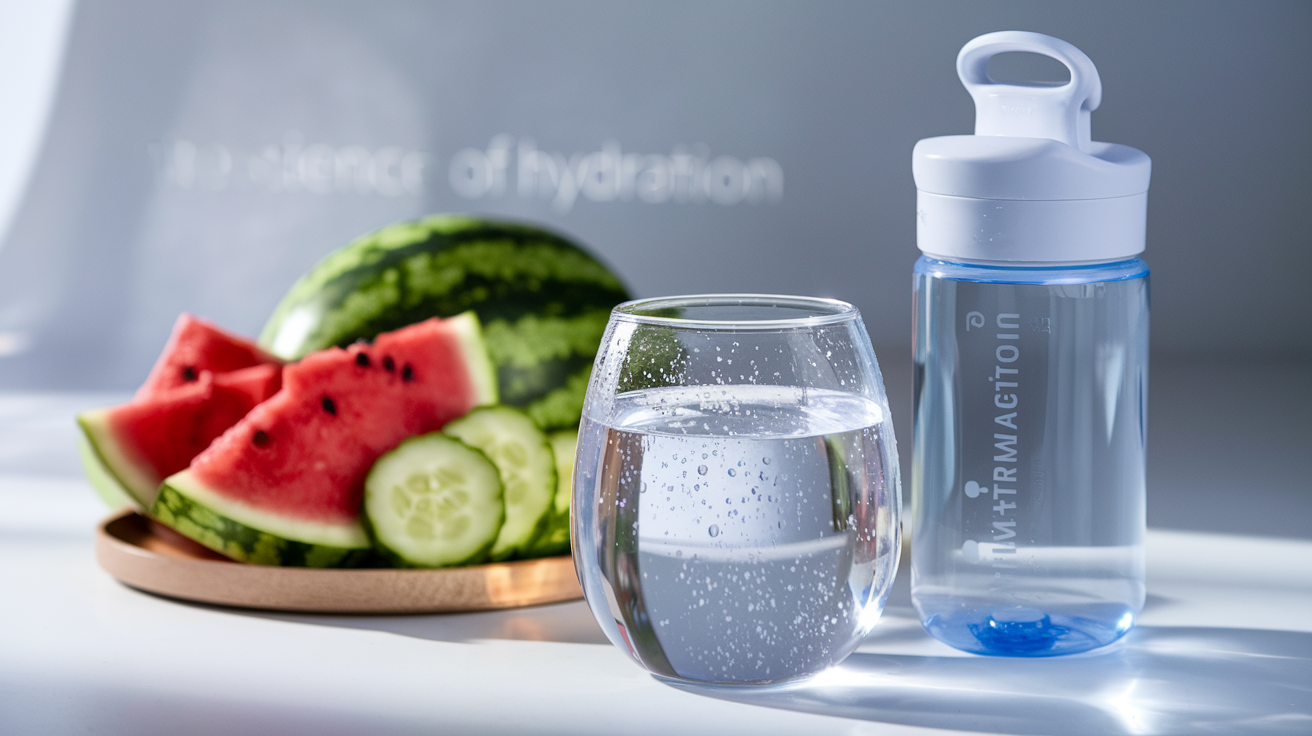The Science of Hydration
Did you know that the famous “8 glasses of water a day” rule has little scientific backing? Yet for decades, we’ve all been told this is the gold standard for staying hydrated. From 19th-century hydrotherapy enthusiasts to modern wellness gurus, the message has remained consistent: drink more water. But the science of hydration is far more nuanced than most of us realize.
Water constitutes a significant percentage of your body—it’s essential for cellular function, nutrient transport, temperature regulation, and even cognitive performance. When dehydration sets in (which can happen with as little as a 2% fluid deficit), your body sends distress signals: thirst, fatigue, confusion, and decreased physical performance. 💧 The consequences extend beyond momentary discomfort; research now links proper hydration with chronic disease prevention and potentially increased longevity.
In this comprehensive guide, we’ll explore the true fundamentals of hydration science, revealing how dehydration impacts your health systems, and sharing optimal strategies for staying hydrated. You’ll discover hydration sources beyond plain water and learn special considerations for specific groups like athletes, children, and older adults. By the end, you’ll understand that proper hydration isn’t about following arbitrary rules—it’s about listening to your body and responding to its unique needs.
The Fundamentals of Hydration
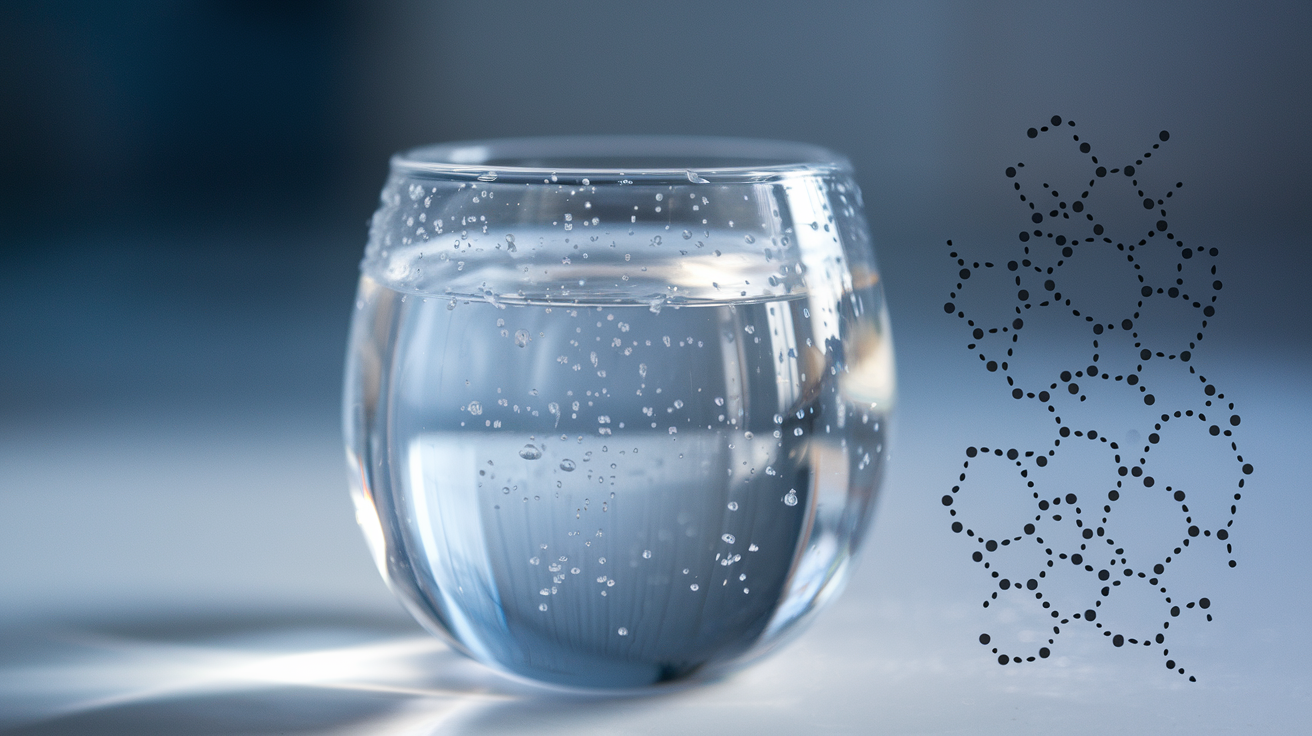
Water’s Critical Role in Body Function and Composition
Your body is basically a walking water balloon. About 60% of you is water. Think about that for a second – more than half of what makes you “you” is just H2O.
Water isn’t just filling space either. It’s the ultimate multitasker in your body:
- Acts as your internal transportation system, moving nutrients to cells and carrying waste away
- Regulates your body temperature through sweat
- Lubricates your joints so you don’t creak like an old door
- Forms the base of your blood, saliva, and digestive fluids
- Cushions your brain and spinal cord (yes, you’re basically thinking through water)
Without enough water, these systems start failing. It’s like trying to run your car without oil – technically possible for a short time, but nothing good comes from it.
Debunking the “8×8” Rule: History and Evidence
We’ve all heard it – drink eight 8-ounce glasses of water daily. This advice is so common that most people accept it without question.
But here’s the kicker: this golden rule has shockingly little scientific backing.
The 8×8 rule likely originated from a 1945 U.S. Food and Nutrition Board report that recommended about 2.5 liters of water daily. What everyone missed? The report also stated that most of this water comes from food.
Recent research paints a different picture:
| What Science Actually Shows | Common Misconception |
|---|---|
| Total water needs vary widely by individual | Everyone needs exactly 64oz daily |
| 20-30% of fluid intake comes from food | Only drinking water counts as hydration |
| Your body signals thirst before dangerous dehydration | You’re chronically dehydrated without 8×8 |
Individual Factors Affecting Hydration Needs
One-size-fits-all hydration advice is about as useful as one-size-fits-all pants. Your water needs are uniquely yours, shaped by:
Activity Level: Crushing a marathon? You need way more water than someone binge-watching Netflix. Every sweat session depletes your fluid reserves.
Environment: Living in Phoenix in July versus Seattle in November creates dramatically different hydration demands. Heat and humidity crank up your water needs.
Body Size: Bigger bodies generally need more water. It’s simple math – more cells need more hydration.
Health Status: Certain conditions like fever, vomiting, or diarrhea can drain your water reserves quickly. Pregnancy and breastfeeding also increase fluid needs substantially.
Diet: If you load up on water-rich foods (think cucumbers, watermelon, oranges), you’re getting significant hydration from your plate. Conversely, salty foods increase your fluid needs.
Your personal hydration sweet spot lies at the intersection of all these factors. The most reliable gauge? Your thirst and the color of your urine – aim for light lemonade, not apple juice or water.
How Dehydration Impacts Your Health
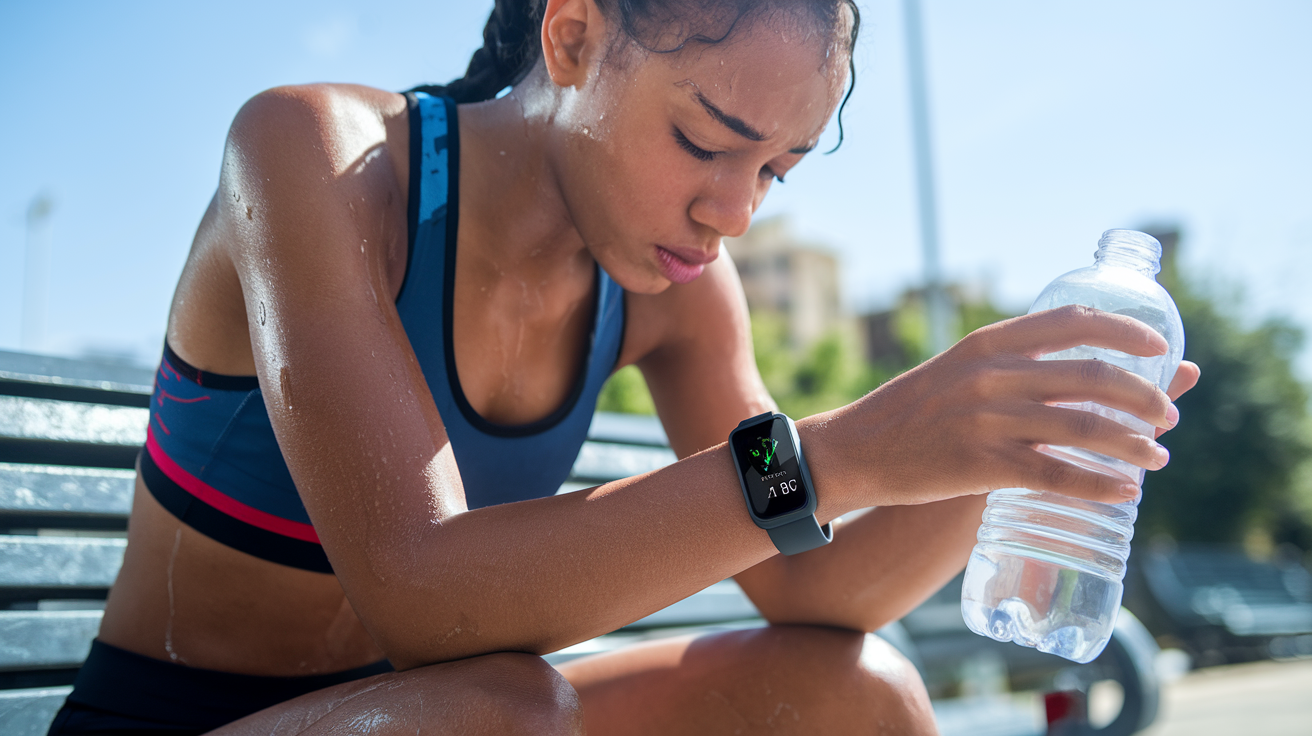
Physical and Cognitive Effects of Fluid Deficits
Dehydration hits your body hard and fast. When you’re not drinking enough water, your blood gets thicker, forcing your heart to work overtime. This translates to fatigue that you can feel dragging you down throughout the day.
Your brain suffers too. Even mild dehydration (just 1-2% of body weight) can torpedo your concentration, short-term memory, and decision-making abilities. That afternoon brain fog? It might be your body crying out for water. Studies show reaction times slow significantly when you’re dehydrated, making everything from driving to typing that important email more difficult.
Physical performance takes a nosedive as well. Your muscles cramp, strength decreases, and endurance plummets. Athletes know this well – just a 2% drop in hydration can cause a 20% decrease in performance. But you don’t need to be running marathons to feel these effects.
Temperature regulation gets thrown off too. Your body needs adequate water to sweat effectively, and without it, you’re at higher risk for heat exhaustion or heat stroke.
Early Warning Signs of Dehydration
Your body sends clear signals when it’s running dry – if you know what to look for.
Thirst is obvious but actually a late warning. By the time you feel parched, you’re already dehydrated. A better indicator? Your urine. Dark yellow urine means you need to drink up. Aim for a light straw color.
Dry mouth, lips, and skin are telltale signs your body’s reserving moisture. You might notice reduced skin elasticity – pinch the back of your hand and see how quickly it returns to normal. Slow bounce-back means you need water.
Headaches arrive when your brain temporarily shrinks away from your skull due to fluid loss. Dizziness and lightheadedness follow as blood pressure drops.
Muscle cramps, particularly in your legs, signal electrolyte imbalances from fluid loss. And that cranky mood? Dehydration affects neurotransmitter function, tanking your mental state before you realize what’s happening.
Correlation Between Hydration Status and Chronic Disease Risk
Staying properly hydrated isn’t just about feeling good today – it’s an investment in your long-term health.
Chronic mild dehydration links directly to kidney stone formation. Your kidneys need adequate water to flush out waste products effectively. Without it, minerals concentrate and crystallize, forming those dreaded stones.
Heart disease risk climbs when you’re chronically dehydrated. Thicker blood means higher blood pressure and greater strain on your cardiovascular system. One study found that staying well-hydrated could reduce heart failure risk by up to 25%.
Bladder and colon cancer rates also appear lower in well-hydrated people. The theory? Regular water intake dilutes potential carcinogens and flushes them through your system faster, reducing exposure time.
Digestive disorders like constipation become chronic problems with insufficient hydration. Water softens stool and maintains intestinal function.
Joint health deteriorates faster without proper hydration. Your cartilage is about 80% water, and staying hydrated helps maintain this crucial cushioning between bones.
Optimal Hydration Strategies

Recommended Daily Fluid Intake for Different Demographics
Water needs aren’t one-size-fits-all. Your hydration requirements change based on your age, activity level, climate, and health status.
For most adults, the classic “8×8 rule” (eight 8-ounce glasses daily) is just the starting point. The National Academies actually recommend about 15.5 cups (3.7 liters) for men and 11.5 cups (2.7 liters) for women daily – but this includes water from all beverages and foods.
Kids need different amounts:
- Toddlers (1-3 years): 4 cups daily
- Children (4-8 years): 5 cups daily
- Older children/teens: 7-11 cups daily
Pregnant women need about 10 cups daily, while breastfeeding moms need roughly 13 cups to maintain milk production and their own hydration.
Athletes and active people might need 16-20 cups daily during intense training. Yes, that much!
Your environment matters too. Living in hot, humid areas or at high altitudes? Add 2-3 extra cups daily.
Practical Methods to Monitor Your Hydration Status
Forget complicated tests. Your body gives clear signals about your hydration status.
The urine check is your simplest tool. Dark yellow urine with a strong smell? You’re probably dehydrated. Aim for a pale straw color – not completely clear (which might mean overhydration) but not amber or brown either.
Weight fluctuations can be telling. Dropping 2% of your body weight after exercise means you’re dehydrated. Weigh yourself before and after workouts to gauge how much fluid you need to replace.
Skin elasticity works too. Pinch the skin on the back of your hand – if it takes time to return to normal (instead of snapping back), you might be dehydrated.
Thirst isn’t always reliable – by the time you feel thirsty, you’re already slightly dehydrated. But persistent dry mouth is a definite sign you need water.
Try the headache test. Many people develop tension headaches when dehydrated, which often resolve after drinking water.
The Benefits of Consistent Sipping Throughout the Day
Chugging water all at once isn’t the smartest hydration strategy. Your body absorbs fluids better when you drink steadily throughout the day.
When you drink large amounts quickly, your kidneys can’t process it all and simply flush it out. That’s why the bathroom sprint happens after downing a full water bottle at once.
Consistent sipping keeps your cognitive function at its peak. Research shows even mild dehydration (1-2% of body weight) impairs concentration, short-term memory, and decision-making. Students who sip water during tests actually score better!
Regular hydration stabilizes your mood too. The same mild dehydration that affects thinking can make you irritable and anxious.
Your joints thank you for steady hydration. Water helps maintain the cushioning between your joints and prevents that stiff, achy feeling many people blame on age but is often just dehydration.
Metabolism works better with steady hydration. Your body needs water to burn calories efficiently. Studies show drinking water before meals helps with weight management by creating natural portion control.
Try setting hourly hydration reminders or marking time goals on your water bottle to develop this healthy habit.
Sources of Hydration Beyond Plain Water
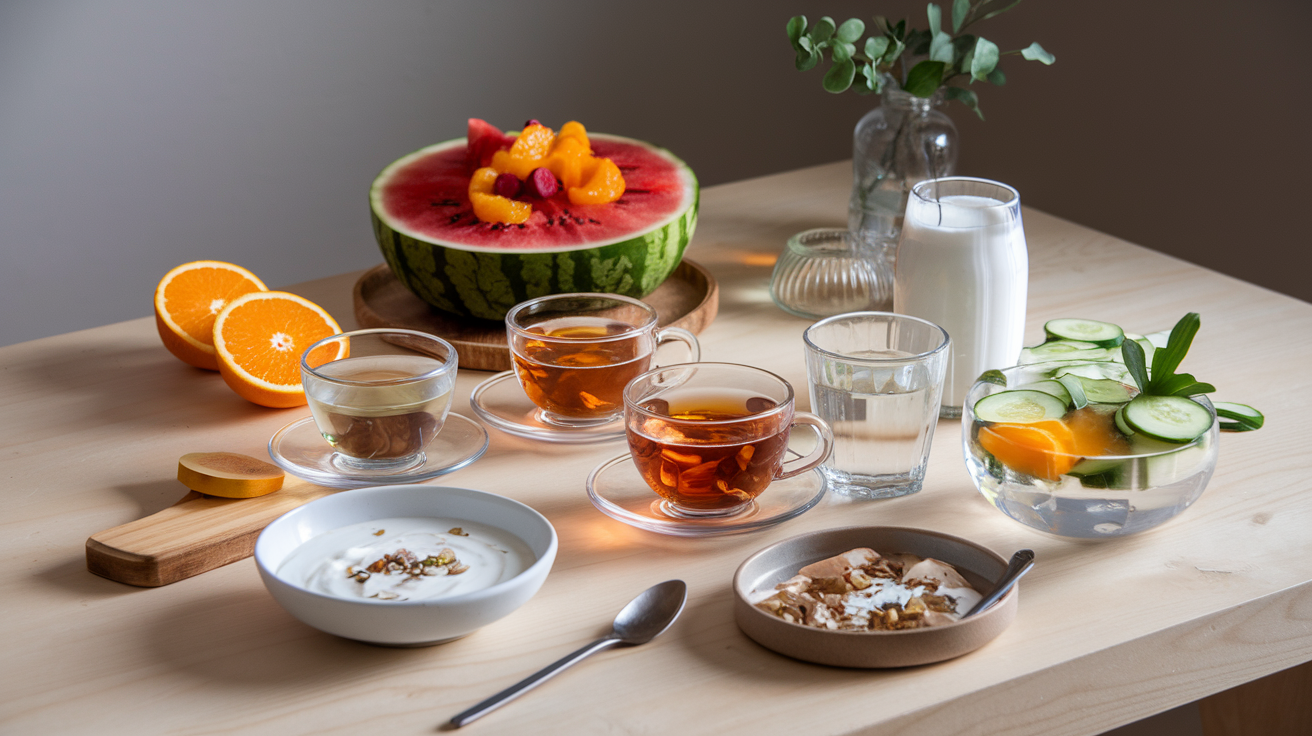
A. Water-Rich Foods That Contribute to Hydration
Think drinking eight glasses of water daily is your only hydration option? Think again.
Your body gets about 20% of its daily water intake from food. And some foods are absolute hydration powerhouses.
Cucumbers top the list at 96% water content. Slice them into your salad or munch them as a snack, and you’re basically eating water with benefits – they contain silica that helps your skin stay hydrated too.
Watermelon isn’t just a summer treat – it’s 92% water and packed with electrolytes like potassium and magnesium that help your cells absorb that moisture more effectively.
Here’s a quick breakdown of other hydration heroes:
| Food | Water Content | Bonus Nutrients |
|---|---|---|
| Strawberries | 91% | Vitamin C, antioxidants |
| Spinach | 91% | Iron, folate |
| Cantaloupe | 90% | Vitamins A & C |
| Bell peppers | 92% | Vitamin C, antioxidants |
| Celery | 95% | Fiber, potassium |
B. The Truth About Caffeinated Beverages and Hydration
Coffee makes you dehydrated, right? Not so fast.
Recent research has busted this myth wide open. While caffeine has mild diuretic properties, the water in your coffee or tea more than makes up for it.
A 2014 study published in PLOS ONE found that when consumed in moderate amounts (under 400mg caffeine daily), coffee contributes to your daily fluid intake nearly as effectively as water.
The key word? Moderate. Three or four cups spread throughout your day won’t leave you dehydrated. But slam back seven espressos, and you might find yourself making extra bathroom trips.
Tea offers even better hydration benefits with less caffeine and added antioxidants. Green tea in particular provides a gentle hydration boost with metabolism-supporting compounds.
C. Importance of Water Quality and Filtration Methods
Not all water is created equal. The quality of what you’re drinking matters just as much as how much you’re drinking.
Municipal tap water might contain chlorine, heavy metals, pharmaceutical residues, and other contaminants. While many are regulated at “safe” levels, their cumulative effect is still being studied.
Home filtration systems range from simple to sophisticated:
Carbon filters (like Brita) are affordable and remove chlorine and some contaminants, but miss many others.
Reverse osmosis systems provide the most thorough filtration, removing virtually all contaminants including microplastics – the downside is they waste water and remove beneficial minerals.
Mineral-enhanced water deserves attention too. Electrolytes like calcium, magnesium, and potassium improve hydration efficiency, helping your body actually use the water you consume. This is why spring water often feels more “satisfying” than distilled water.
Some groundbreaking research even suggests that structured or “fourth phase” water might hydrate cells more effectively, though this science is still emerging.
Special Considerations for Specific Groups
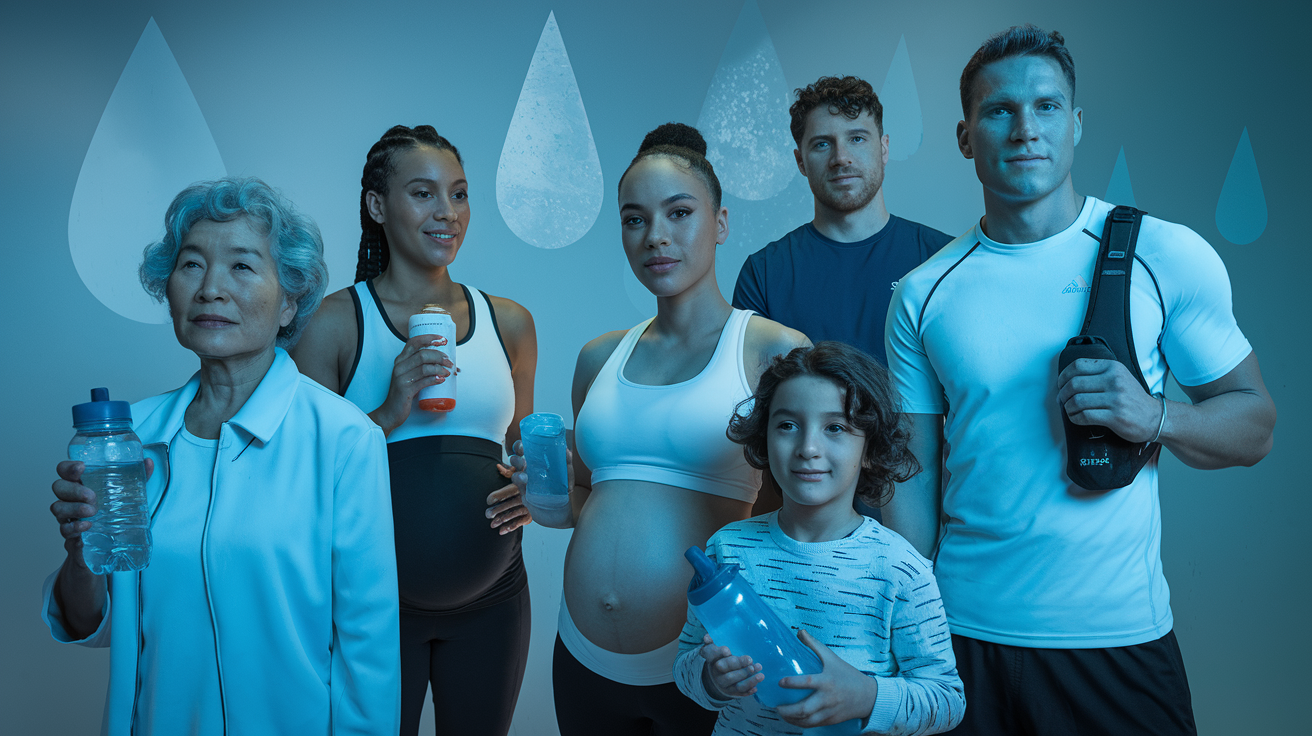
A. Hydration Requirements for Athletes and Active Individuals
Ever noticed how much more you sweat during intense workouts? That’s your body’s cooling system in action – and it means you need way more fluids than the average person.
Athletes typically lose 6-10% of their body weight in sweat during intense training. That’s not just water going down the drain – it’s critical electrolytes too.
The hydration game changes completely when you’re active. Here’s what you need to know:
Pre-workout hydration isn’t optional. Drink 16-20 ounces of fluid about 2-3 hours before exercise, then another 8 ounces 20-30 minutes before you start.
During your workout, aim for 7-10 ounces every 10-20 minutes. This might feel like a lot, but your performance literally depends on it.
Post-workout is when most people drop the ball. For every pound lost during exercise, drink 16-24 ounces to properly rehydrate.
Sports drinks aren’t just marketing hype – they serve a real purpose when you’re training hard. Activities lasting longer than 60 minutes generally require electrolyte replacement, not just water.
Your hydration needs are as unique as your training style. A marathon runner needs a different strategy than a powerlifter. Track your sweat rate by weighing yourself before and after workouts to dial in your personal hydration plan.
B. Age-Related Hydration Needs: Children and Older Adults
Kids and seniors face totally different hydration challenges than the rest of us.
Children’s bodies contain a higher percentage of water (about 75% compared to an adult’s 60%), making them more vulnerable to fluid losses. Plus, kids often get caught up in play and simply forget to drink. Their thirst mechanisms aren’t fully developed either, so they might not recognize when they need water.
For kids, the hydration guidelines look like this:
| Age | Daily Water Intake |
|---|---|
| 1-3 years | 4 cups (32 oz) |
| 4-8 years | 5 cups (40 oz) |
| 9-13 years | 7-8 cups (56-64 oz) |
| 14-18 years | 8-11 cups (64-88 oz) |
On the flip side, older adults face their own set of challenges. As we age, our thirst sensation naturally weakens. Many seniors don’t feel thirsty even when they’re already dehydrated.
Medication complicates things too. Many common prescriptions for blood pressure, heart conditions, and diabetes act as diuretics, increasing fluid loss.
Seniors should aim for at least 7-8 cups daily, with adjustments for health conditions. The “clear urine test” works well for this age group – if your urine is dark yellow, you need more water.
C. Environmental Factors Affecting Hydration Needs
Your environment dramatically shifts how much you should drink. This isn’t just about temperature – it’s a whole ecosystem of factors.
High altitude is a hidden hydration thief. For every 1,000 feet above sea level, your respiratory water losses increase by about 200ml per day. This happens because you breathe more rapidly in thinner air, expelling more moisture with each breath.
Humidity plays a massive role too. When it’s humid, your sweat doesn’t evaporate efficiently, which means your body’s natural cooling system works overtime. You’ll sweat more but feel less relief.
In extreme heat, your fluid needs can double or even triple. Working or exercising in temperatures above 90°F (32°C) might require 16-32 ounces of fluid per hour.
Air travel is particularly dehydrating. The recycled cabin air typically has a humidity level of just 10-20% (compared to the comfortable 30-60% we’re used to). A good rule is to drink 8 ounces of water for every hour in the air.
Climate change is making hydration even more crucial. With record heat waves becoming more common, understanding your environmental hydration needs isn’t just about comfort – it’s about safety.
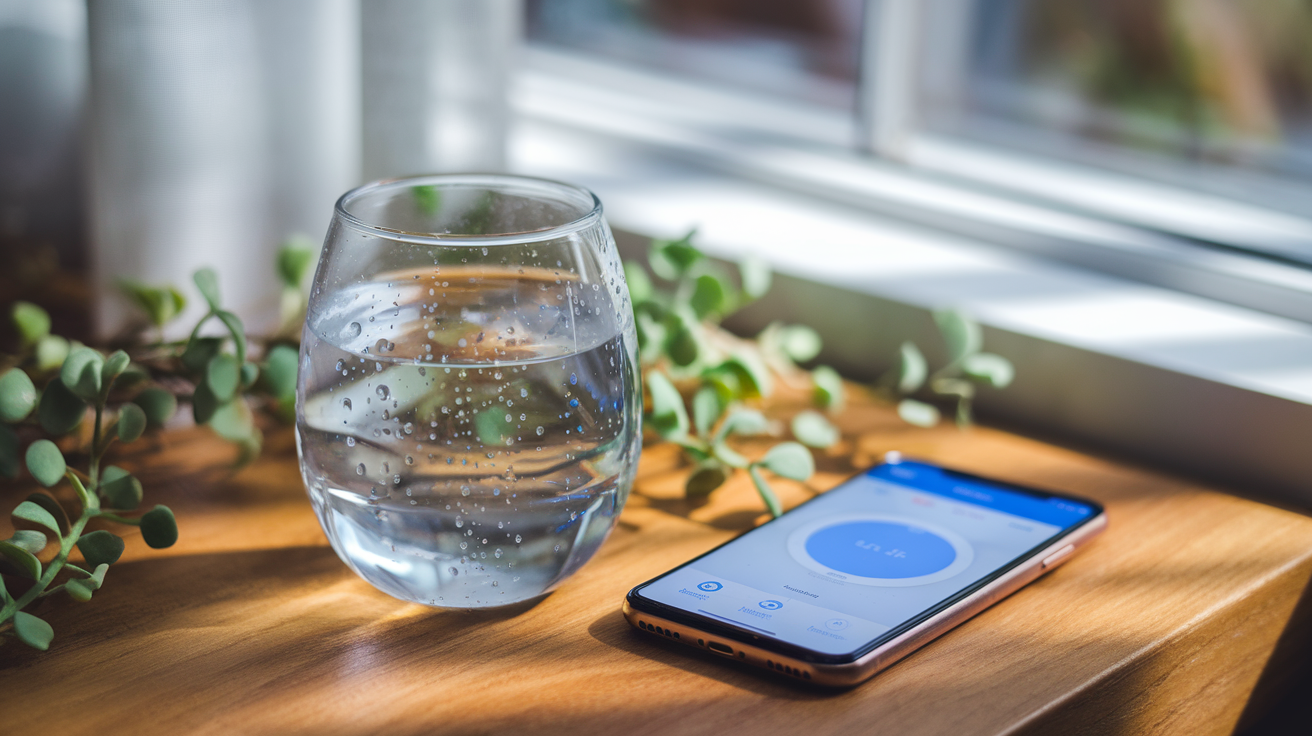
Staying Properly Hydrated: Your Path to Better Health
Understanding the science of hydration empowers us to make informed choices about our fluid intake. Rather than rigidly following the outdated “8×8” rule, we now recognize that hydration needs vary significantly based on individual factors like activity level, climate, and health status. The body’s intricate systems rely on proper hydration for everything from cellular function and nutrient transport to temperature regulation and cognitive performance. By monitoring simple indicators like thirst and urine color, we can better respond to our body’s unique hydration requirements.
Remember that hydration extends beyond plain water—fruits, vegetables, soups, and even caffeinated beverages contribute to your daily fluid intake. Special consideration should be given to athletes, children, and older adults, who have distinct hydration needs and face higher risks of dehydration. As research continues to reveal connections between proper hydration and disease prevention, maintaining adequate fluid intake becomes not just about immediate comfort, but a fundamental component of long-term health and longevity. Make hydration a conscious priority in your daily routine, and your body will thank you with improved performance, enhanced recovery, and better overall wellness.

